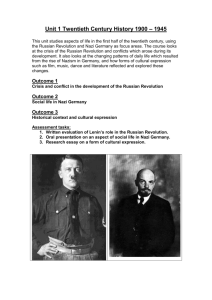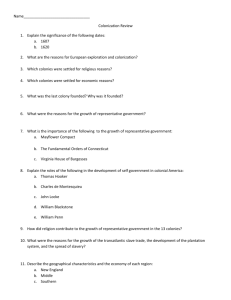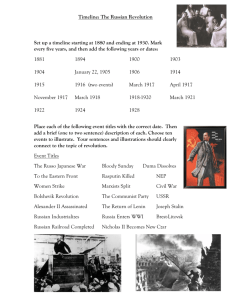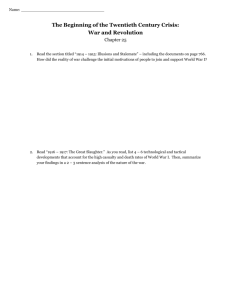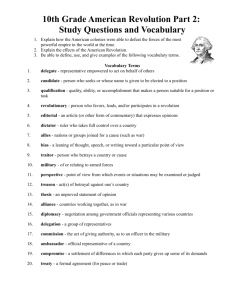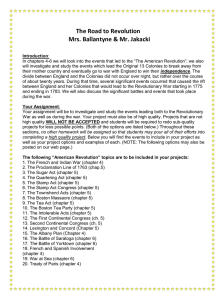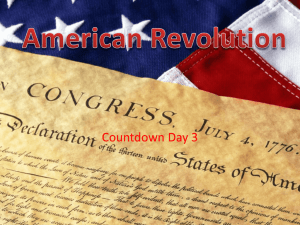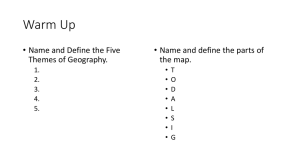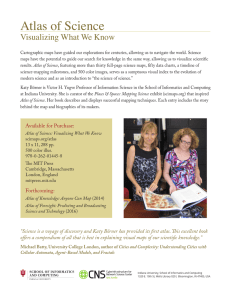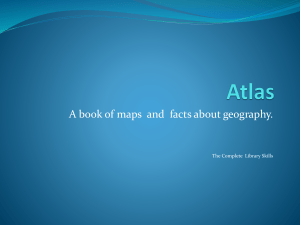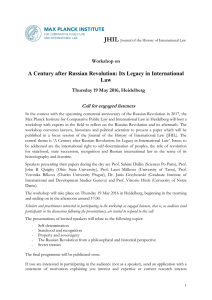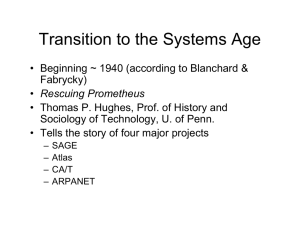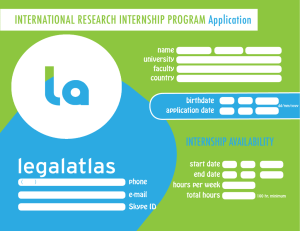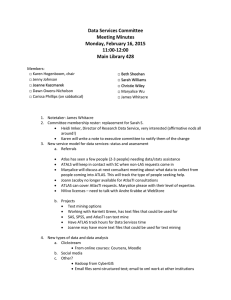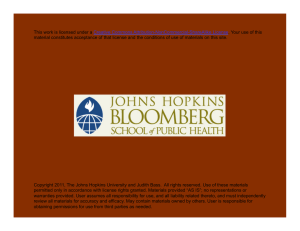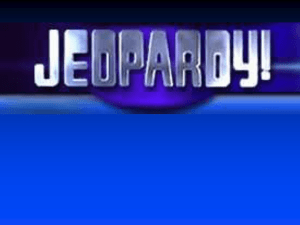Name_______________ Date_____________ Period_______
advertisement
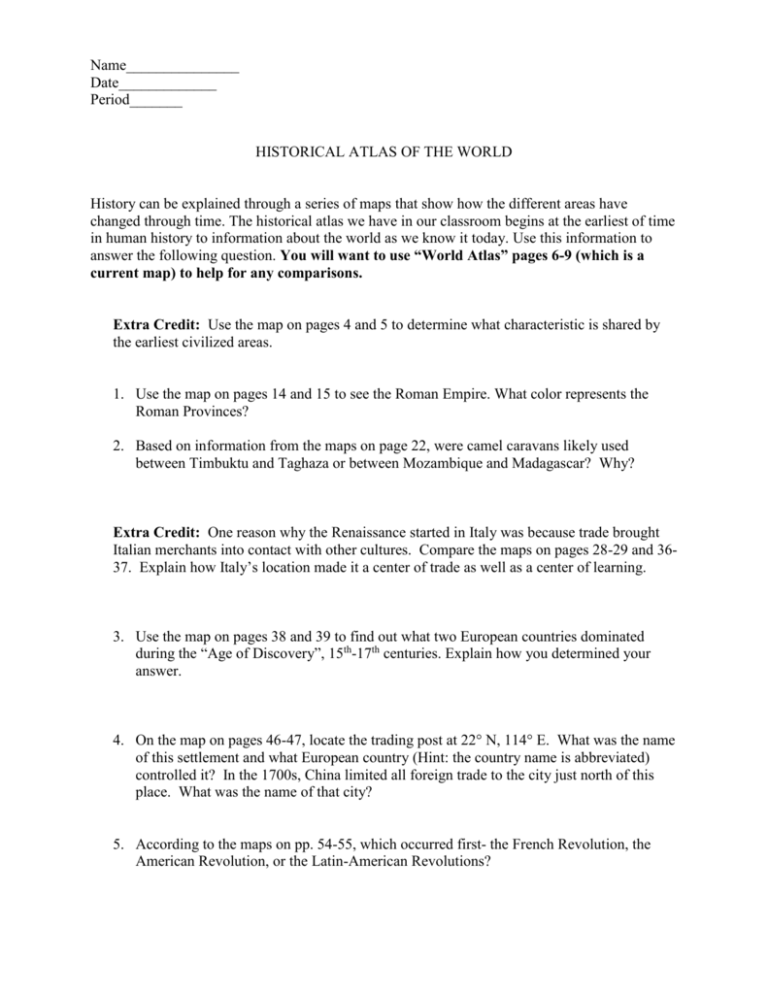
Name_______________ Date_____________ Period_______ HISTORICAL ATLAS OF THE WORLD History can be explained through a series of maps that show how the different areas have changed through time. The historical atlas we have in our classroom begins at the earliest of time in human history to information about the world as we know it today. Use this information to answer the following question. You will want to use “World Atlas” pages 6-9 (which is a current map) to help for any comparisons. Extra Credit: Use the map on pages 4 and 5 to determine what characteristic is shared by the earliest civilized areas. 1. Use the map on pages 14 and 15 to see the Roman Empire. What color represents the Roman Provinces? 2. Based on information from the maps on page 22, were camel caravans likely used between Timbuktu and Taghaza or between Mozambique and Madagascar? Why? Extra Credit: One reason why the Renaissance started in Italy was because trade brought Italian merchants into contact with other cultures. Compare the maps on pages 28-29 and 3637. Explain how Italy’s location made it a center of trade as well as a center of learning. 3. Use the map on pages 38 and 39 to find out what two European countries dominated during the “Age of Discovery”, 15th-17th centuries. Explain how you determined your answer. 4. On the map on pages 46-47, locate the trading post at 22° N, 114° E. What was the name of this settlement and what European country (Hint: the country name is abbreviated) controlled it? In the 1700s, China limited all foreign trade to the city just north of this place. What was the name of that city? 5. According to the maps on pp. 54-55, which occurred first- the French Revolution, the American Revolution, or the Latin-American Revolutions? 6. According to the map on the page 63, what colonies in Latin America did Great Britain control after 1850? 7. According to the map and legend on page 76, did German troops advance farther into Russia in 1918 or 1941/1942? 8. A city located at 60°N, 30°E reflects Russian history. In 1712 it was named for the Russian Czar who founded it and moved his capital there. In 1924 it was renamed to honor the leader of the Bolshevik Revolution. Locate this city on the map on page 76. What names did it have? 9. According to the map on pages 86-87, which two European countries held the most colonies in Africa? 10. Use the map on pages 88 and 89 (and a present day map) to find out what present day countries used to be called the “British Indian Empire”. 11. Use page 95 to list two Axis powers and 2 Neutral nations during WWII (World War 2). 12. Many oil-producing countries border the Persian Gulf. According to the map on pages 96-97, what countries border that body of water? 13. Use pages 96-97 to find out what religion the majority of people in Iran practice. 14. The maps on pp 98-99 show conflicts between the communist world and the free world that took place after World War II. According to these maps, in what parts of the world did the United States (part of the free world) intervene to stop the spread of communism? 15. Use the maps on pp. 102-103 to determine which continents had both the largest Gross Domestic Product (GDP) and the highest rate of literacy. Extra Credit. Study the maps on pages 104-105. What 2 conclusions can you draw about the groups of Europeans who migrated to the Americas?





